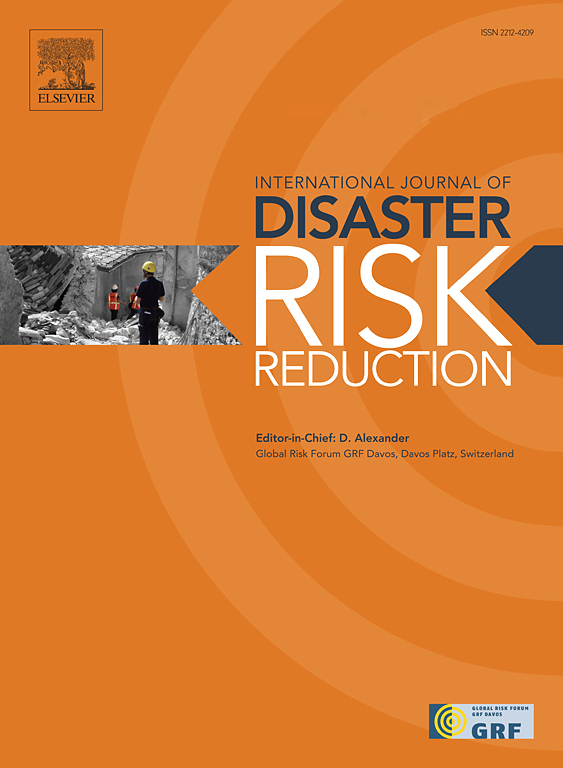An indicator-based GIS approach for assessing a community's vulnerability to mobility-related disruptions caused by floods
IF 4.2
1区 地球科学
Q1 GEOSCIENCES, MULTIDISCIPLINARY
International journal of disaster risk reduction
Pub Date : 2025-02-25
DOI:10.1016/j.ijdrr.2025.105342
引用次数: 0
Abstract
Assessing vulnerability in the road transport sector has received extensive attention because of the increased frequency and intensity of natural disasters such as floods. Communities' vulnerability to mobility-related disruptions is an area that has received less attention in developing countries. Given the higher vulnerability in developing countries and their contextual differences, this study aims to fill this scholarly gap by examining how vulnerability changes spatially and what makes regions vulnerable through a multidimensional approach. This approach consists of several dimensions, including road infrastructure, user functional, and socio-demographic aspects, to assess the community's exposure and susceptibility to mobility disruptions, which are combined to determine overall vulnerability. This study spatially assesses vulnerability in the Western Province of Sri Lanka using weighted liner combination modelling and multivariate cluster analysis. This study found three main clusters with higher exposure close to the rivers in this Province as a key determinant of the spatial pattern of vulnerability. Further, this assessment demonstrated how the inclusion of susceptibility results in an observable difference in the overall spatial pattern of vulnerability. Using cluster analysis, this research especially highlights the practical importance of cluster-specific solutions derived based on the uniqueness of the vulnerability determinants in each cluster. The proposed method helps to develop place-based vulnerability and risk reduction strategies and emergency management interventions rather than implementing a centralised approach.

求助全文
约1分钟内获得全文
求助全文
来源期刊

International journal of disaster risk reduction
GEOSCIENCES, MULTIDISCIPLINARYMETEOROLOGY-METEOROLOGY & ATMOSPHERIC SCIENCES
CiteScore
8.70
自引率
18.00%
发文量
688
审稿时长
79 days
期刊介绍:
The International Journal of Disaster Risk Reduction (IJDRR) is the journal for researchers, policymakers and practitioners across diverse disciplines: earth sciences and their implications; environmental sciences; engineering; urban studies; geography; and the social sciences. IJDRR publishes fundamental and applied research, critical reviews, policy papers and case studies with a particular focus on multi-disciplinary research that aims to reduce the impact of natural, technological, social and intentional disasters. IJDRR stimulates exchange of ideas and knowledge transfer on disaster research, mitigation, adaptation, prevention and risk reduction at all geographical scales: local, national and international.
Key topics:-
-multifaceted disaster and cascading disasters
-the development of disaster risk reduction strategies and techniques
-discussion and development of effective warning and educational systems for risk management at all levels
-disasters associated with climate change
-vulnerability analysis and vulnerability trends
-emerging risks
-resilience against disasters.
The journal particularly encourages papers that approach risk from a multi-disciplinary perspective.
 求助内容:
求助内容: 应助结果提醒方式:
应助结果提醒方式:


